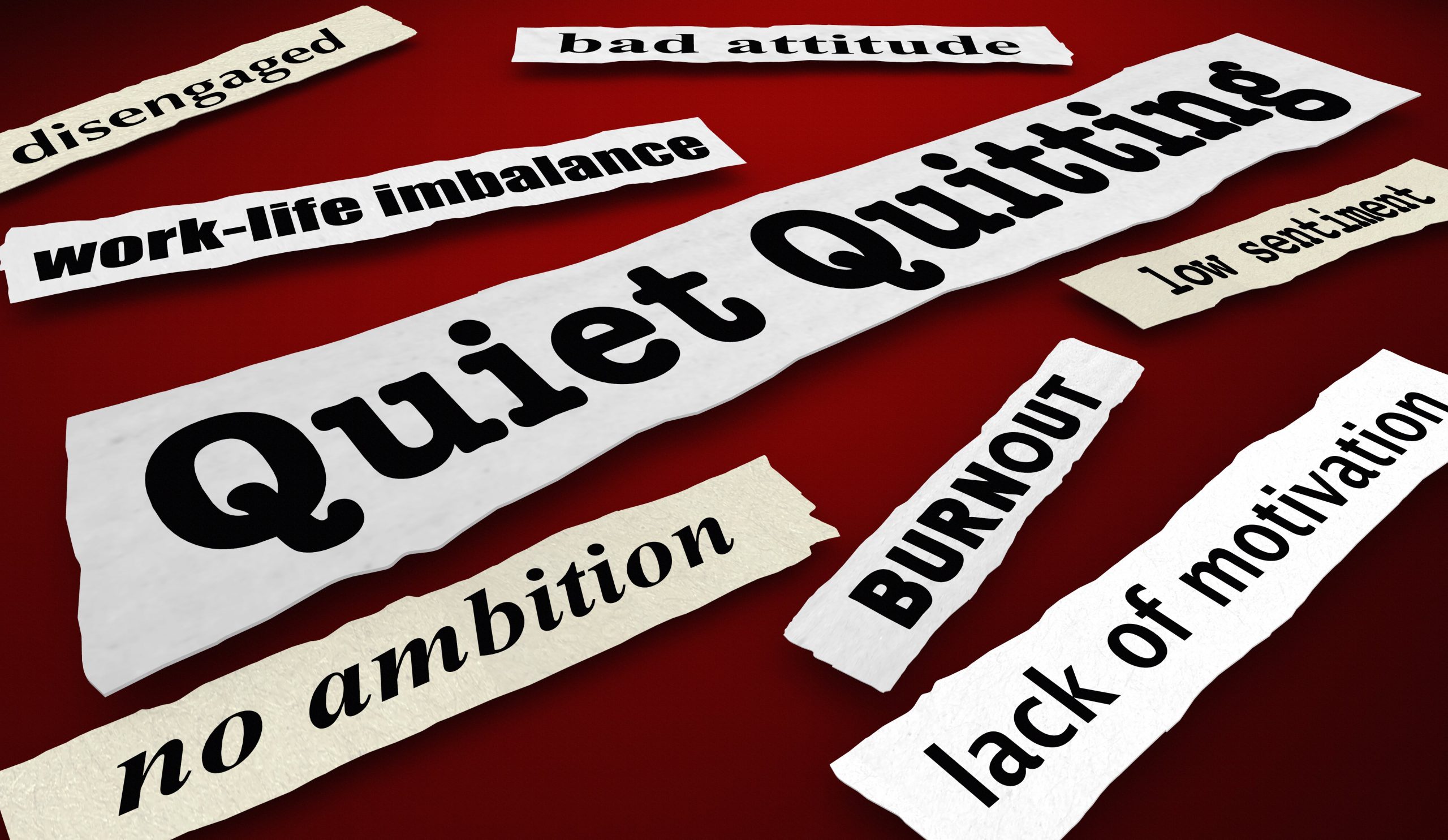That’s the point – they likely aren’t telling you.
You know how hard it is to recruit top talent. You also know how hard it is to keep top talent once you’ve brought them on board.
And it’s only getting harder.
Why?
Because people are increasingly feeling disengaged at work. On the one hand, they’re still recovering from the COVID-19 pandemic, which has led them to reprioritize their work-life balance. On the other hand, they’re not being given the chance to become stakeholders. Therefore, they don’t see why they should invest in the companies they work for beyond doing the bare minimum.
It’s no surprise, then, that “quiet quitting” was among the top headlines of 2022.
What may come as a surprise, though, is that in 2022 quiet quitters (i.e., people who reported being disengaged at work) made up over 50% of the US workforce[1] and that the resulting drop in productivity cost the global economy $7.8 trillion, accounting for 11% of overall GDP.[2]
So that may mean you (and me) too!
Especially concerning is the fact that quiet quitting creates a negative feedback loop. The conditions that lead to disengagement elevate the levels of anxiety, frustration, and burnout workers feel. This negatively impacts their health and wellbeing outside the workplace, which then follows them back to the office, whether they’re working in-person or remotely.
That may be why the 828 young workers surveyed in a 2022 poll conducted by The Generation Lab and Axios ranked work lower on their list of priorities than family, friends, wellness, and hobbies.[3] An astonishing 82% of the 18-29-year-olds surveyed said the idea of doing the minimum required to keep their jobs is pretty or extremely appealing, with 15% reporting they were already doing so. And that cut across demographics, including gender, race, and political affiliation.[4]
But it’s not just young workers who are quiet quitting. Even though the US ranks first in the world when it comes to employee engagement, the number of American workers who claim to be engaged in the workplace is only 33%.[5]
As easy as it would be to blame the C-suite for this, that would ignore the fact that it’s workers themselves who are leading the charge to redefine work and the workplace. Nevertheless, bad management is at the core of the calls for change. According to Gallup’s State of the Global Workplace 2022 Report, the biggest source of employee disengagement stems from “unfair treatment at work,” followed by an unmanageable workload, unclear communication from managers, lack of manager support, and unreasonable time pressure.[6]
Clearly, leadership has a critical role to play in building a more mindful workplace. In those cases where companies are taking up the mantel, they’re not only attracting top talent, they’re nurturing that talent — to everyone’s advantage. Because, even though quiet quitting doesn’t show signs of abating, workers themselves say they’re still interested in an 8-hour workday.[7] The difference is that the conditions have to be conducive to their overall health and wellbeing.
Reality Check
Overall, the desire to work to live, rather than living to work, is consistent across gender, race, and political views. The new generation of office workers has been shaped by hybrid and remote culture, and values work-life balance far more than the generations that came before it.
It seems that “the grind culture” is out and life culture is in, and work has perhaps never been redefined so rapidly. Whether we like it or not, quiet quitting is ubiquitous, and could be here to stay.
NEXT UP – How to prevent quiet quitting in 2023 your organization? Check back next week!
[1] https://www.gallup.com/workplace/398306/quiet-quitting-real.aspx
[2] https://www.gallup.com/workplace/349484/state-of-the-global-workplace-2022-report.aspx
[3] https://www.generationlab.org/_files/ugd/b2ee84_ea3e8dbc2f7845c5886f871ccda24ba8.pdf
[4] https://www.generationlab.org/_files/ugd/b2ee84_ea3e8dbc2f7845c5886f871ccda24ba8.pdf
[5] https://www.gallup.com/workplace/349484/state-of-the-global-workplace-2022-report.aspx
[6] https://www.gallup.com/workplace/349484/state-of-the-global-workplace-2022-report.aspx
[7] https://www.generationlab.org/_files/ugd/b2ee84_ea3e8dbc2f7845c5886f871ccda24ba8.pdf
Do you have questions about this article or about our marketing consulting services? Either leave a reply in the comment box below or contact us privately and directly, here.
Maribeth Kuzmeski, PhD, President of Red Zone Marketing, is a marketing strategist, advisor to financial services companies, bestselling author of seven books, and a professional speaker rated as a Top 25 C-Suite Speaker as seen in Meetings & Conventions Magazine. She speaks on topics including marketing, branding, sales, and customer service.
Recent Articles:
What is a Marketing Funnel and How to Use It?



